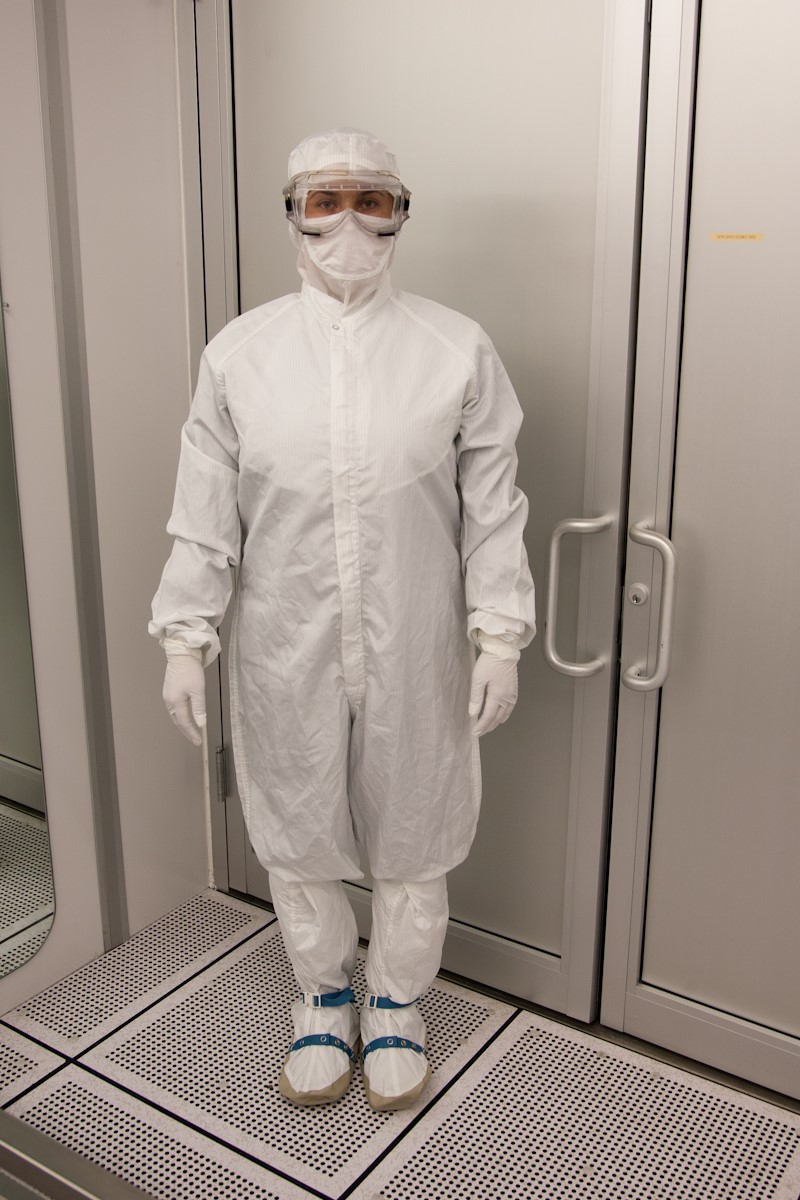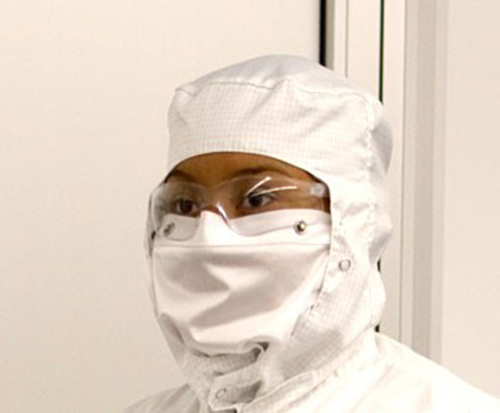The cleanroom—an artificial environment specially engineered to minimize the concentration of airborne pollutants—has undergone many improvements and refinements since Willis Whitfield installed the first one at Sandia National Laboratories in 1962. Today, the cleanroom plays a vital role in manufacturing processes in the pharmaceutical and microprocessor industries, as well as other sectors where it is imperative to control airborne contaminants. It’s likely that cleanrooms will undergo further developments as the trend toward miniaturization in manufacturing makes sensitive materials increasingly vulnerable to the negative effects of contamination.
What this means for you, as someone involved in the management of controlled environments, is that you need to remain up to date on evolving standards in cleanroom processes. That includes understanding the huge importance of cleanroom attire for keeping these environments safe and operating effectively.

HD ESD sterile and non-sterile hood, coverall, frock, boots, facemask and sleeve cover with non-linting yarns, high-density construction and anti-static carbon fibers. Image: Prudential Overall Supply/Prudential Cleanroom Services
The Science Behind the Uniform
In cleanrooms, ensuring that the level of airborne contaminants stay below an acceptable threshold can be difficult. Tools, equipment, machinery, and circulating air can all harbor pollutants that interfere with microprocessors, biomedical matter and other sensitive materials. But the biggest source of contaminants, by far, is human personnel. Unlike inanimate objects, human beings cannot be sterilized. Even when sitting perfectly still, they continuously spread around dead skin, hairs, microbes and other pollutants.
Therefore, it is necessary for cleanroom personnel to wear specially designed clothing that can serve two functions: preventing natural human contaminants from infecting the environment, and protecting the wearer from hazards in the immediate area. The specific properties of apparel to be worn in a cleanroom depends on the unique characteristics of the environment in question, but it is common for this type of clothing to include the following design characteristics:
- Non-linting material: Ordinary workplace apparel has small fibers that occasionally fall loose. This is bad news for cleanrooms with delicate microprocessors. Lint-free clothing solves this problem.
- Resistance to arc flashes: OSHA regulations require employees to wear clothes resistant to flash flames whenever the threat of an electrical arc flash is present. An arc flash can exceed 35,000 F, so it’s extremely important for specialized FR (flame resistant) cleanroom clothing to help protect personnel from this dangerous phenomenon.
- Anti-static carbon fibers: Static electricity is another hazard that can harm electronic equipment, especially in oxygen-rich environments. Electronics can be damaged even by very weak static shocks that are not detectible by human beings. Anti-static or electrostatic discharge (ESD) apparel reduces this risk.
- High-density fabric: This protects against heat and corrosive liquids.
Proper cleanroom apparel can be an important part of HACCP compliance, so it’s important to understand what goes into that widely recognized standard.
What it Takes to be HACCP Compliant
Hazard analysis and critical control points (HACCP) is a system that was originally intended to promote food safety—and remains most commonly associated with that function—but it has found increasing acceptance in other industries as well, such as the pharmaceutical sector. The HACCP system consists of seven “points” that collectively help eliminate safety issues:
1. Conduct a hazard analysis: Check for potential problems in the process.
2. Identify critical control points: Pinpoint specific areas where hazards can interfere with the workflow.
3. Establish critical limits: Calculate the parameters that must be observed at each control point.
4. Establish monitoring procedures: Create measures to track activity at each control point.
5. Establish corrective actions: Institute procedures for fixing problems when they are detected.
6. Establish verification procedures: Ensure that all relevant devices are functioning accurately.
7. Establish recordkeeping procedures: Create a process for recording and storing accurate data.
For cleanrooms, HACCP compliance involves both using the right kinds of uniforms as well as establishing procedures for their proper handling.

Polyester knit facemask with bias taped edge and adjustable snaps. Image: Prudential Overall Supply/Prudential Cleanroom Services
Advances in Uniform Cleaning Technology
Most cleanroom clothing is reusable, which is good news for laboratories that otherwise would have to incur huge expenses by continually purchasing new apparel. However, it is essential to ensure that this apparel is cleaned properly; contaminated clothing defeats the whole purpose of wearing it.
Fortunately, overburdened labs can turn to to third-party organizations to provide cleaning services. When vetting your options, make sure you choose one that is Clean Green Certified through TRSA. Where required, this service should offer a sterilization validation program that utilizes gamma radiation to achieve a 10-6 sterility assurance level (SAL). Reusing cleanroom clothing is an eco-friendly solution that lowers facility expenses and reduces your overall carbon footprint.
Gowning Procedures
Like so many beneficial accessories, cleanroom apparel must be used correctly to obtain its full range of benefits. It requires a precise sequence of actions to ensure that the clothes do not become contaminated.
Exactly how this sequence goes depends on the needs of the particular facility, including its ISO cleanroom classification, so there is no standardized gowning procedure that applies to every environment. In general, though, the gowning procedure involves thoroughly cleaning exposed skin (including the removal of cosmetics) and any clothing that will be worn underneath the cleanroom apparel. Jewelry must be removed, or at least completely covered. Personnel must be able to don their clothing while preventing it from touching the ground, where it can pick up contaminants, at any time during the process. Many cleanrooms place a sticky mat before the entrance to remove dirt and other contaminants from the shoes of personnel.

Shoe cover—HDESD made of 99 percent polyester and 1 percent carbon plain weave fabric with adjustable back snap. Image: Prudential Overall Supply/Prudential Cleanroom Services
Types of Cleanroom Attire
Certain types of cleanroom apparel are designed to cover the entire body, while others are intended to cover particular areas, depending on the needs of the facility. A wide variety of hoods, goggles, face masks, gloves, coveralls, boots and footwear coverings are available from uniform manufacturers. Cleanroom managers have access to a wide range of sterile and non-sterile uniforms and apparel capable of accommodating the safety requirements of their facility.
About the Author
Jerry Martin is the Vice President of Sales & Marketing at Prudential Overall Supply and Prudential Cleanroom Services, a provider of cleanroom uniforms, apparel and cleanroom services.




